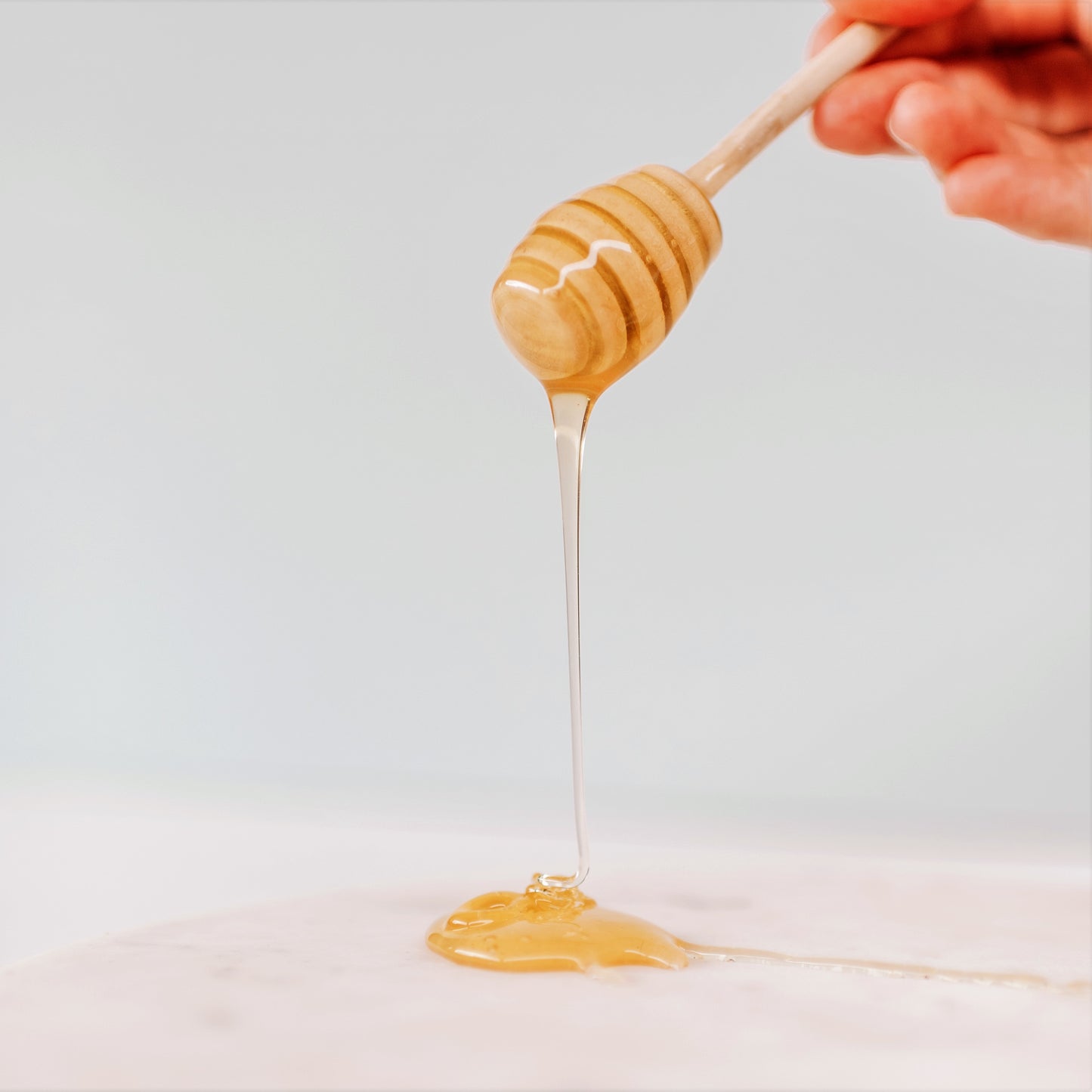
Is Crystallised Honey Safe to Eat?
Crystallisation of honey is a harmless process and perfectly safe to eat. By no means spoilt, old or no longer fit for consumption, as long as the honey has been properly stored. In fact, crystallisation only changes the colour and texture; it does not change the quality of honey. For many individuals, crystallised honey is preferable, as it's easy to handle without the sticky drips.
What is Crystallised Honey?
Crystallisation, also known as hardened, candied, solidified or granulated honey, is a natural, uncontrollable process through which natural honey changes from a liquid to a semi-solid state.
Why Does Honey Crystalize?
Two sugars, fructose and glucose, are included in honey's carbohydrate composition.
Crystallisation is mostly caused by the concentration of glucose in honey. When glucose separates from water, it produces small crystals due to its lower solubility. Fructose, on the other hand, which has a greater solubility, remains liquid.
Honey crystallises at varied speeds; it might take a week, two months, or two years. Other factors might initiate, accelerate, slow down, or even obstruct the crystallisation process.
Many commercial honey brands on the market, excessively heat, pasteurize, blend and/or over filter honey to prevent the effects of crystallisation. These processes make their honey seem clear, smooth and appealing on the shelf. As a result, the honey is stripped of pollen, enzymes, and nutrients, destroying all of honey's natural properties, compromising on quality and nutritional benefits.
What Causes Honey Crystallisation?
Handling of the honey, temperature, storage, processing, blending, and packaging, as well as honey variety, are all elements that may cause crystallisation. The presence of tiny pollen, wax, and propolis particles also accelerates the process. It’s common for pure, raw, unfiltered honey to crystallise more rapidly due to the presence of these natural particles.
How Can I return Honey to a Liquid State?
The best way to restore hardened honey to a liquid state is by immuring the tightly sealed jar in a bowl of hot water (about 40°C), allow 15 minutes before stirring. To avoid compromising the quality of your honey, ensure the jar or container is tightly sealed to prevent introducing moisture and always use a clean and dry spoon to dip into the jar. This is the most effective technique to retain the natural properties and return to a liquid form.
Storing Your Honey
Honey is one of the simplest pantry items to keep.. If properly stored, it has an almost infinite shelf life. Generally honey doesn’t require a ‘best before date’, however when sold commercially it is a consumer requirement. Honey’s best stored away from direct sunlight, in a tightly sealed container, and in temperature of roughly 25°C to keep from crystallising. Refrigeration is not necessary or recommended, since honey it will solidify in cooler temperatures.
Pure Origins Honey is cold extracted and packed at temperatures lower than the beehive itself. Unlike most other brands, our honey is not excessively heated when extracted or packed. This means that although it takes longer to pour, it retains all of its crucial enzymes, anti-bacterial properties and nutritional value.
Pure Origins Honey is 100% Pure Australian, Natural, Raw, Single Region and Cold Extracted, as nature intended.
